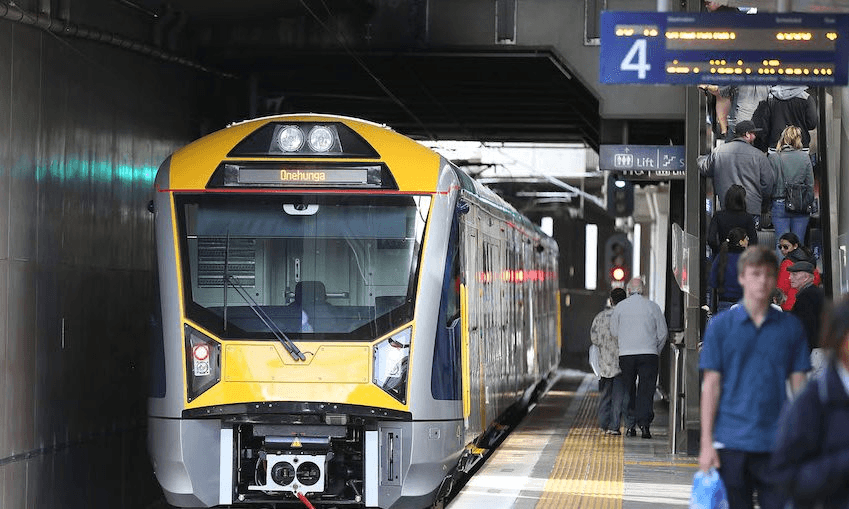Greater Auckland’s Matt Lowrie looks at the hidden benefits of rail outlined in a 2016 NZTA report released just this week, which transport minister Phil Tywford says was intentionally sat on by the previous government.
For the last few decades, we’ve treated rail in New Zealand quite differently to the way we treat roads. Rail has been considered a business that needs to pay its way and make a financial profit. Investment in rail has been about supporting that by ‘turning around’ the business. By comparison, we invest in roads based on the expected impact that investment will have on the overall economy. This includes measures such as improved travel time savings and safety. The impact a road project will have on fuel tax and road user charge revenues are never even considered.
The former National government were never happy rail was brought back and many party members were ideologically opposed to rail. While they ultimately provided investment to improve rail, they always did so begrudgingly, treating it like a millstone hanging around the country’s neck.
But a 2016 NZTA/KiwiRail report that was finally released this week shows the value that rail is adding to our economy. Transport Minister Phil Tywford says the report was sat on by the previous government due to their opposition to rail. A media release accompanying the report reads, in part:
Rail is delivering up to $1.5 billion a year to New Zealand in hidden benefits, according to a study prepared as part of a joint KiwiRail/NZTA team looking at integrated transport planning.
“That far exceeds what the taxpayer is spending on rail,” KiwiRail Chairman Trevor Janes says. The study, carried out by professional services firm EY, looked at some of the wider economic benefits the rail network brings to New Zealand.
“The areas where rail is delivering for New Zealand include cutting congestion, reducing greenhouse gas emissions, improving safety on our roads and lowering spending on road maintenance and upgrades.
“These benefits do not show up on the balance sheet, but they are very real, and they make a huge contribution to New Zealand.”
At $1.5 billion annually is a significant impact. Unsurprisingly, most of the benefits come from getting both people and goods off the road and reducing congestion. What is surprising is that more than half of all the $1.5 billion in benefits comes from Auckland’s rail services (more on that shortly). Here’s more from the media release:
Mr Janes says the biggest contribution from rail comes from the reduction it brings in road use. “Rail is taking cars off the road and it’s taking trucks off the road. That is saving the country $1.3 billion a year because it cuts congestion for all road users, including other freight movers.
“The study found that without rail there would be the equivalent of an additional 100,000 daily car trips on our roads each year – 76 million light vehicle hours reduced through rail – and 57 million of those hours were on Auckland roads.
“Rail also means heavy vehicles such as trucks are on the roads for 11 million fewer hours each year – the equivalent of 30,000 trucks driving for an hour every day.
“Using rail cuts New Zealand’s carbon emissions by 488,000 tonnes a year. That is the equivalent of taking 87,000 cars off the road, saving millions of dollars. Rail freight has 66% fewer carbon emissions than heavy road freight which is useful for New Zealand reaching its ambitious climate change targets.
“New Zealand has a road toll issue with deaths on the road rising markedly since 2013. Taking trucks and cars off the road makes for a safer New Zealand with EY estimating that because we have a rail network, there are 271 fewer fatalities and injuries on the roads.
The table below breaks down the benefits
As you can see, by far the biggest benefit comes from passenger services reducing congestion on our roads. The report breaks this down between Auckland and Wellington. Auckland’s impact is much greater due to the higher levels of congestion and comes in at $848.78 million to $863.43 million. Wellington makes up the other $291.83 million to $303.74 million.
What’s particularly important about the Auckland numbers is that the authors deliberately used old, lower ridership data to be conservative. They used 2014 data in which rail ridership was less than 13 million trips. That’s right before the explosive growth of the last few years and over three million fewer trips than when the analysis was conducted in 2016. There are now over 20 million rail trips. That means the benefits from Auckland alone are now likely to exceed $1 billion.
Of course, the growth we’ve seen has been thanks to investment in projects like electrification. As such, I’d expect at least some of those benefits to have been captured in the various business case processes. Although given the phenomenal growth that has exceeded all predictions, not all of it will have been.
KiwiRail says that ultimately, the real point of this report is to allow for better discussions about how we invest in transport. We certainly welcome that and the new government seem keen to engage.
This post originally ran on Greater Auckland.
